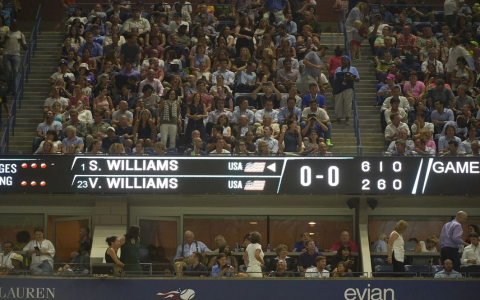Okay, so I wanted to share something I put together recently – a simple tennis score card. Nothing fancy, but it’s been pretty useful.
Getting the Idea
Honestly, I just got fed up trying to remember the score during games, especially longer ones. You know how it is, you’re focused on playing, maybe it goes to deuce a few times, and suddenly both you and your opponent are like, “Wait, was that 30-40 or deuce?”. Happened way too often. I figured there had to be a better way than just relying on memory, especially my memory these days.
First Steps – Figuring it Out
I thought about just using a notebook, but I wanted something a bit more structured. I didn’t need anything super complicated like the umpires use on TV. Just the basics. So, I sat down and sketched out what I thought was essential.
Needed things:
- Space for player names, obviously.
- Columns for sets. How many sets? Usually best of three for me, so planned for three, maybe a bit extra just in case.
- Rows for games within each set. Gotta track those games, 1, 2, 3, up to 6 or 7.
- A way to track points within a game. This was the tricky part. 15, 30, 40, Ad. Didn’t want to write it out every time.
I messed around with a few layouts on scrap paper. First few tries were a bit cluttered. I realized I needed a simple way to mark points, maybe just ticking boxes or circling numbers.
Making the Actual Card
I decided to make something reusable. Paper would just get crumpled or wet. So, I fired up the computer, used a basic program – nothing fancy, maybe like Word or even Excel – just to make some simple boxes and lines. I created a grid:
- Player names at the top.
- Columns labeled Set 1, Set 2, Set 3.
- Under each set, rows numbered 1 through 7 for games.
- Beside the game numbers, I put small boxes or circles for the points: 15, 30, 40, AD. This way, I could just put a check or an ‘X’ next to the current score point.
- Added a little spot to mark who is serving too. Helps remember that.
Once I had a design I liked, I printed out a couple of copies on slightly thicker paper. Then, I dug out my old laminator – haven’t used that thing in ages! Ran the printouts through it. Now I had a sturdy, wipeable scorecard. Got some dry-erase markers, and bam, ready to go.
Using It on the Court
Took it out the next time I played. It felt a bit weird at first, pausing slightly to mark the score. But honestly, it took like two seconds. And it completely stopped those “What’s the score?” debates. We just glanced at the card. Super simple.
The first version worked okay. I used a small dry-erase marker. Wiped clean easily after each match. It definitely made keeping track less of a mental chore. I could focus more on hitting the ball.
Little Adjustments
After using it a few times, I made one small tweak. I realized I didn’t leave quite enough space if a set went to a tie-break. My initial boxes were just for regular games. So, on my next printout before laminating, I added a dedicated little box under each set specifically labeled “Tie-Break” where I could just jot down the points. Problem solved.
So yeah, that’s my little tennis scorecard project. Took maybe an hour to design and make, but saves a lot of hassle on the court. Just a simple tool, made with basic stuff, but does the job perfectly for me. Maybe you’ll find making one useful too.














